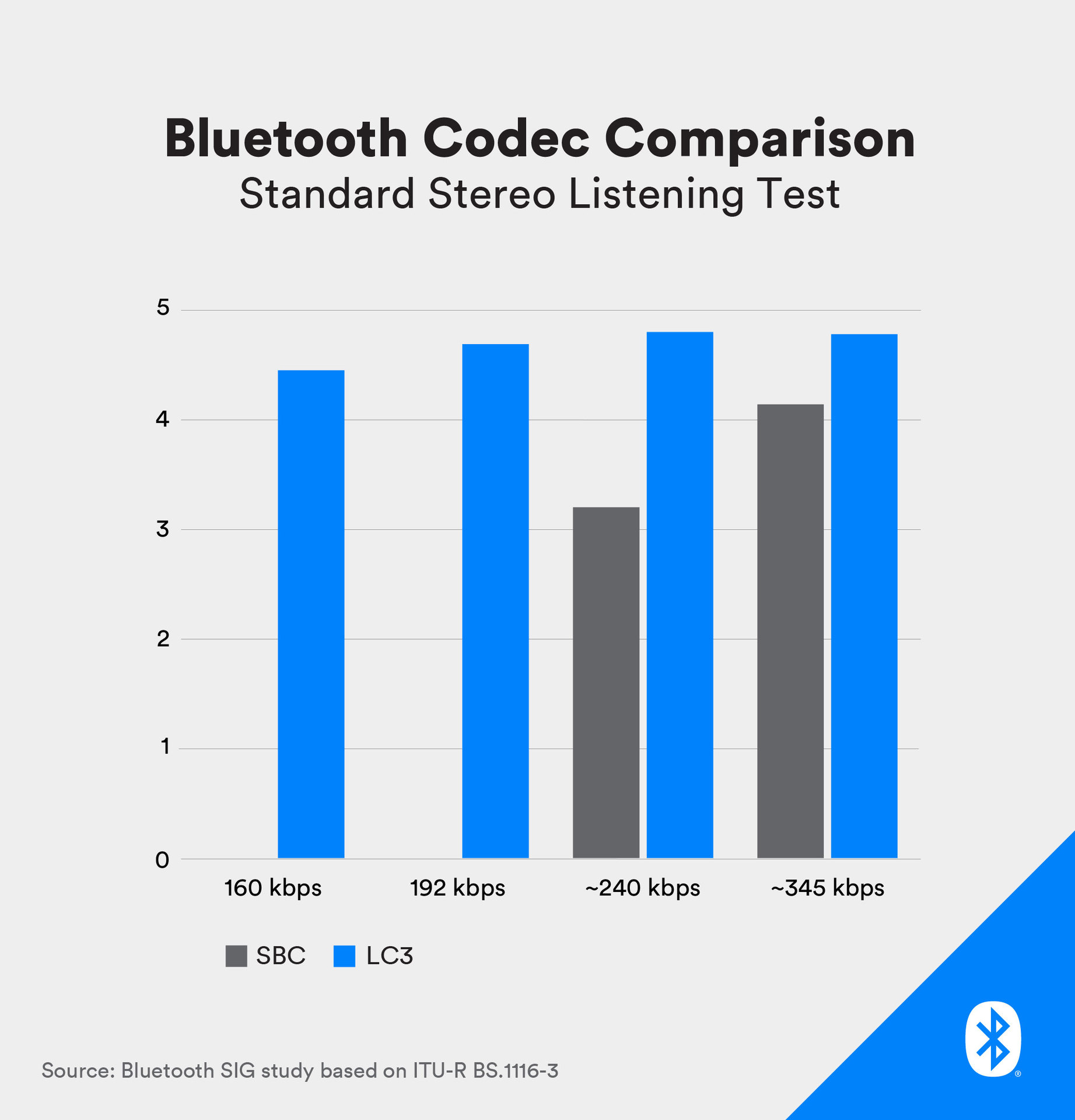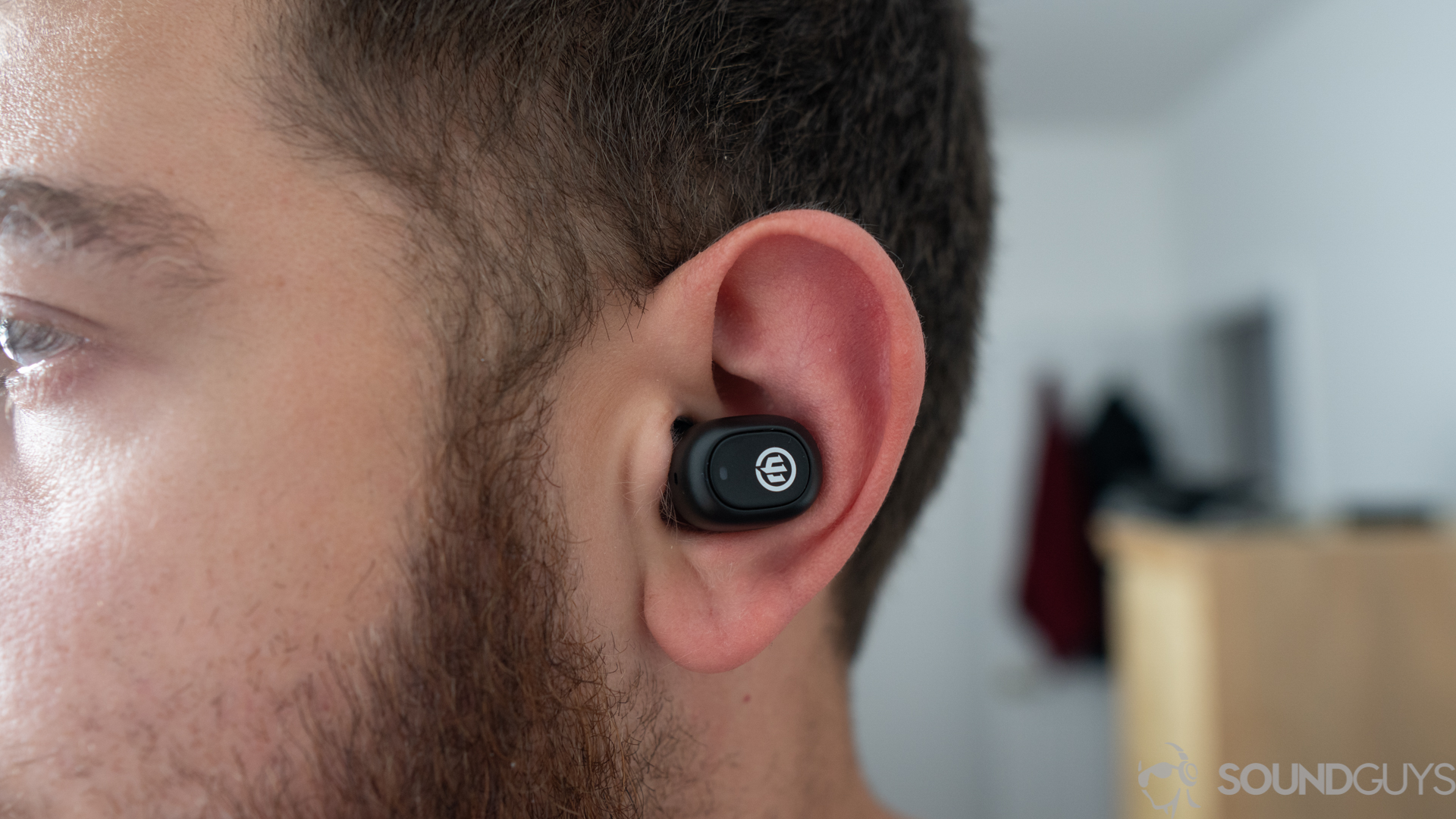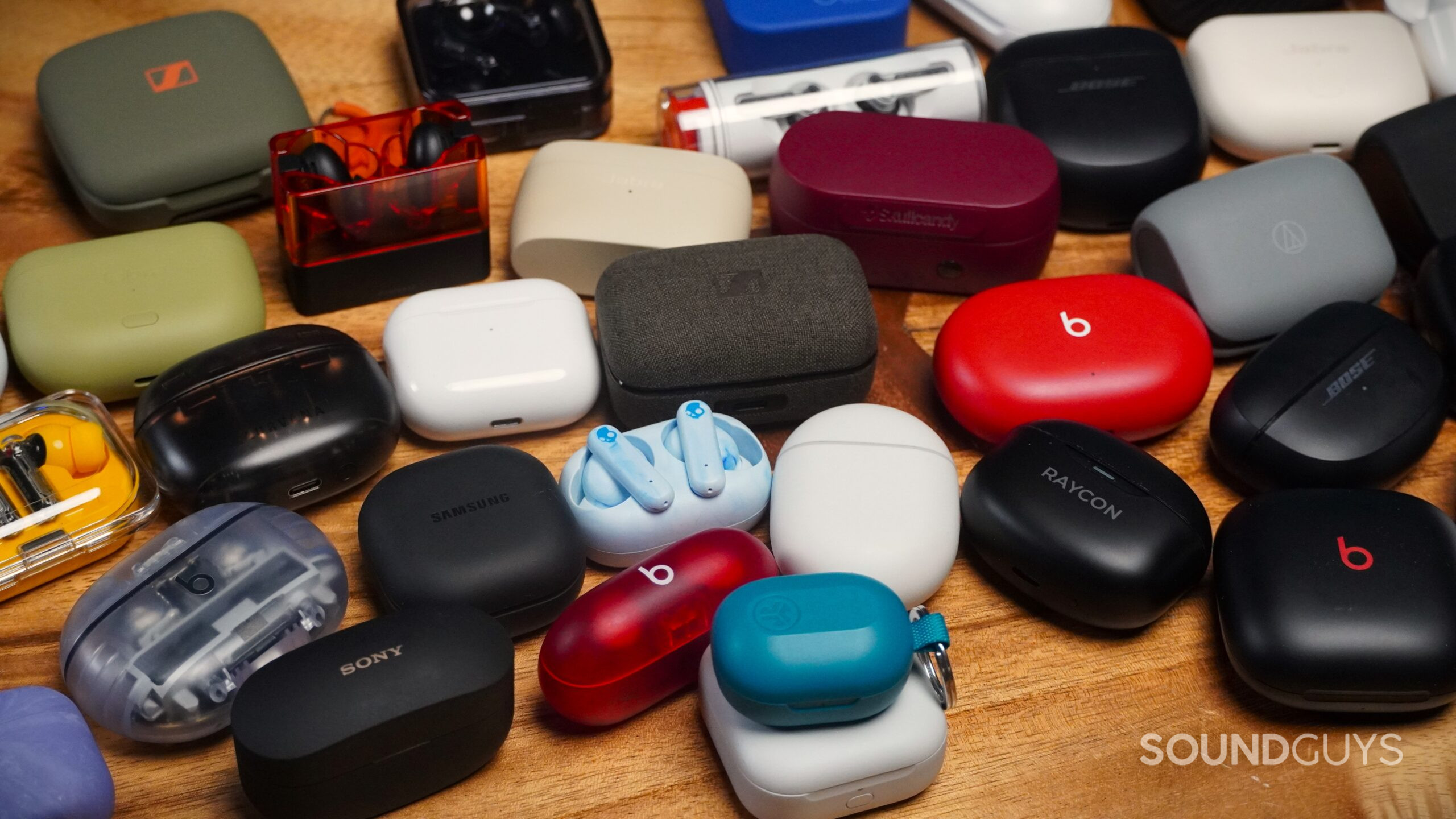All products featured are independently chosen by us. However, SoundGuys may receive a commission on orders placed through its retail links. See our ethics statement.
What is LE Audio and LC3, the latest in Bluetooth audio?
July 11, 2024
Now that Bluetooth 5.3 is more prevalent in the audio products people buy, it’s worth reading up on the biggest feature that came along with the standard’s release: LE Audio. Headline-grabbing features of the new LE Audio standard include the new LC3 Bluetooth codec, and Auracast — a feature that’s not only going to be available on earphones, but hearing aids too. There’s also now native support for true wireless earbuds and Bluetooth features for hearing aids too.
Here’s everything that you need to know about Bluetooth LE Audio and all its features.
Editor’s note: this article was updated on July 11, 2024 to update dated information.
Bluetooth LE and LE Audio
Before diving into the audio side, a bit of Bluetooth background is required. Currently, there are two major forks of Bluetooth radio operation – Bluetooth Classic and Bluetooth LE. Low Energy caters for low power, low bandwidth data transfers between IoT-like devices like fitness trackers. It launched as part of Bluetooth 4.0 and remains under the Bluetooth 5.0 and 5.1 standards.
Bluetooth Classic, which includes older Bluetooth 1.0, 2.0, and 3.0 use cases, is still required for more power-hungry high-speed data transfers. This includes as sending audio data between your phone and headphones. All of the current Bluetooth audio codecs, whether that’s default SBC, Qualcomm’s aptX, or Sony’s LDAC, transmit data over Bluetooth Classic.
LE Audio changes the game, finally enabling audio data to transmit over the lower power and lower bandwidth Bluetooth LE radio too. That’s obviously great for both headphones and handset battery life and listening times. However, LE Audio will first be supported in version 5.2 of the Bluetooth Core Specification. Meaning you’ll need new devices to take advantage of it.
Check out the video below for more details on LE Audio and its components.
Meet the LC3 Bluetooth codec
LE Audio introduces an all-new Bluetooth audio codec called LC3 (Low Complexity Communication Codec). A codec compresses audio for transmission over the air. If you need to brush up on what a codec is, check out our breakdown here. LC3 scales down to very low bit-rates while retaining good sounding audio quality. This ensures data correctly sends over the limited bandwidth of Bluetooth LE even in congested radio conditions.
For example, LC3 scales from 345kbps right down to 160kbps. SBC, Bluetooth Classic’s mandatory codec, ranges from 345kbps to 240kbps — it takes a substantial hit to audio quality as a result. aptX Adaptive runs between 279 and 420kbps, while LDAC ranges from 330 to 990kbps. LC3 is by far the most compact Bluetooth codec used in consumer audio to date. But what effect does that have on audio quality?

According to Bluetooth SIG, LC3 sounds much better than SBC even when running at lower bit-rates. The company presents the above graph, showing an industry-standard perception score for sound quality at different bit-rates.
You can read about the ITU-R BS.1116-3 perception test here if you would like to know more about how that score works. The key thing to note is that a score of 5.0 is imperceptible from the source. 4.0 indicates a perceptible but acceptable quality difference, and a score of 3.0 is “slightly annoying” in terms of quality degradation. As you can see, LC3 hovers around 4.5 even at its lowest quality setting, which is much better than SBC performs at much higher bit-rates.
The scalable nature of the LC3 codec matches the ideas we’ve seen from aptX Adaptive and LDAC. Quality dials back when connection quality becomes an issue, such as when listening at long distances or in congested radio environments. The move to the limited bandwidth of Bluetooth LE makes this a necessity. It will be interesting to see how regularly LC3 defaults to higher quality bit-rates.
LC3 changes Bluetooth forever
While this may all sound boring and overly in the weeds, the real-world applications of this wireless connection are going to change a lot about how people use their Bluetooth audio accessories. This includes those who use hearing aids and other devices that make audio accessible to those with impairments. That’s because the LC3 offers what Bluetooth has been missing for so long: the ability to have multiple synchronous connections.

True wireless earphones will get dramatically better
Wireless earbuds are a staple of the audio market, but they aren’t all the same. Qualcomm supports True Wireless stereo (left and right audio data directly to the specific earbud) with its smartphone and headphone chips. However, by default, Bluetooth is stuck with the original method of transferring stereo data to one earbud and then sending a mono channel onward to the other earbud. Once new true wireless earphones get their Bluetooth 5.2 hardware, they’ll be able to leave this issue in the dust. Additionally, by switching to LE audio, they can offer much better battery life as well.

Share your music with friends over a single source
While the old method is bad for power consumption and latency, Audio LE supports proper true wireless earbuds using independent synchronized audio streams. Audio LE takes this further, supporting multiple-device streaming from a single source. For example, two or more listeners streaming movie audio from a laptop to their own Bluetooth headphones.
Audio Broadcast support also makes an appearance with Bluetooth Audio LE. This is a mass broadcast version that supports loads of users predominantly in public places, allowing them to tune headphones into various supported sources. Examples include TVs showing sports in bars, cinemas, or streaming TV news channels in multiple languages. For the hearing impaired, this technology integrates into hearing aids too.
Hearing aids are about to make life even easier for millions
Here’s where all this tech comes together to solve a real-world problem. While improving the lives of those who cannot hear well may not be the sexiest feature of any wireless standard, the real-life application of LE audio devices holds a lot of promise for the hard of hearing because it enables listening directly to the sources around you with a tech dubbed “Auracast.”
For example, a small emitter puck allows hearing-impaired users to connect their hearing aids directly to the soundtrack of the movie they’re watching, the live event they’re listening to, or even sporting events. Essentially, it pipes the live broadcast into your ear canals, instead of having the hearing aid receive and process the sound acoustically from your surroundings. This overcomes a big hurdle for hearing aid users.
Shortcomings in hearing aids are one of the more “invisible” impediments that those hard of hearing have to suffer through, but LE audio goes a long way in alleviating going to a public event and having a tough time participating. While there’s no guarantee that the hardware proliferate any time soon, many hearing aids and earbuds are starting to ship with Auracast compatibility baked in. It should be interesting to see how creative people will get with these pucks. For example, providing live translation services in airports, or replacing guided audio tours in cities.
When can I use Bluetooth LE Audio?
After years of waiting, the complete suite of LE Audio specs have been released by Bluetooth SIG. LE Audio will be bundled as part of upcoming Bluetooth specifications, but it remains to be seen how many venues will invest in Auracast. For example, an airport might be a relatively early adopter, but churches, sports venues, and shopping centers might take a while.
However, now that many new wireless products support LE audio, you shouldn’t have any difficulty finding them. Just make sure that your product supports Bluetooth 5.3, and read reviews to see if your desired features are supported.
Frequently asked questions
No, unfortunately. The only high quality Bluetooth codec Apple’s iOS devices (iPhone and iPad) support is AAC. If the end point accessory doesn’t support AAC, then the Apple device will default to the SBC codec. We have no information about any plans for Apple to support anything else.
In theory, but there are so many factors in how you call quality sounds that have nothing to do with your headphones! Lily wrote an article detailing why your calls likely sound bad.